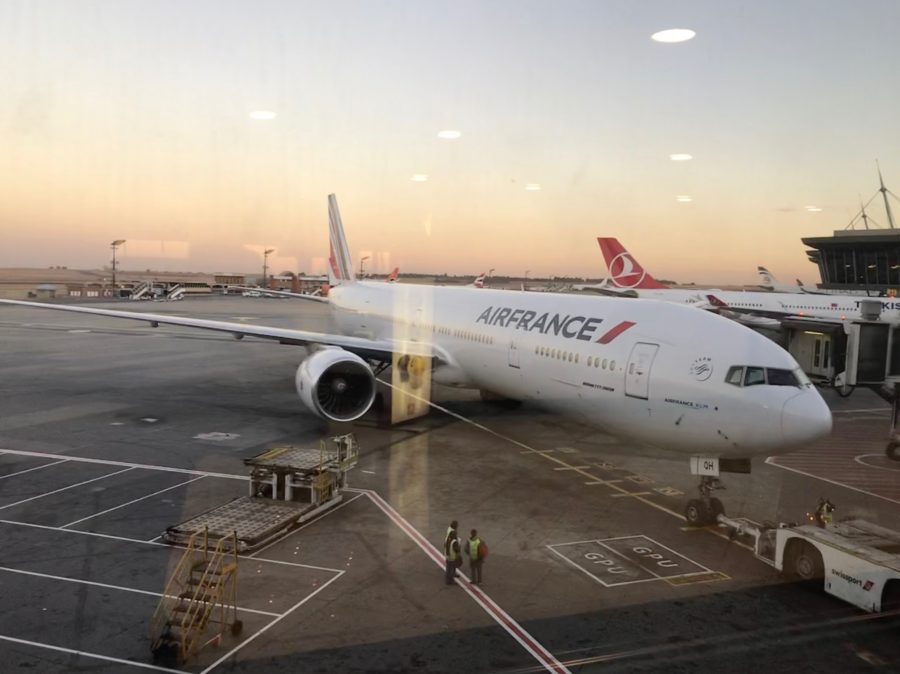The Toll of COVID on Aviation: By The Numbers
The world has obviously taken an extremely large toll as a result of COVID-19, by far most prominently through the amount of life lost as a result of the virus, although also to a lesser (though still massive) extent on commercial aviation. I’ve previously written about what I think the future of aviation will hold, but in this article, I’ll take a look at some of the more tangible and current effects on the aviation industry, through taking a look at grounded planes, money lost, flights operating, etc.
As the world starts to slowly reopen (some parts less slowly than others), the aviation industry has begun its slow and long uphill road to regain the trust of flyers and start flying more of their fleets again. In this article are a few interesting numbers regarding the toll which the aviation industry has taken, in addition to how they are affecting the industry as a whole.
3.6: The Percentage Of Travelers Compared To 2019 Who Flew In The US On April 16th
On April 16th, according to the TSA, only 95,085 traveller flew in the United States (although note: this only accounts for people traveling through US security, so some internationally arriving passengers weren’t counted). That’s about 3.6 percent of the 2,616,158 people who travelled on the corresponding Thursday in 2019, which really shows how much travel has declined, also making it the least amount of passengers who have travelled in one day since (I think) 9/11, and passenger levels haven’t been steadily at that level in many decades. While that was over a month ago now, travel levels stayed roughly even between 3.6% and 5% for the entirety of the month of April, although note that passenger levels have rebounded somewhat to about 12% of what they were at last year, as of May 21.

This has (obviously) been a consequence of the pandemic slowing down (hospitalization rates have dropped in the US) as a result of maintained social distancing for about 2 months, making slightly people more comfortable to travel in non-essential or less-essential circumstances. While I do think that levels will start to steadily increase in the US and around the world throughout the summer, as the pandemic continues to subdue (although experts do warn that it is likely to get worse again in the fall in a second wave, which would consequently result in passenger levels to drop again), don’t expect a full recovery for quite a while; the IATA warned that passenger demand may not recover until 2024.
A takeaway from this is that the aviation industry will never be the same again, given that many people won’t want to travel at least until there is a vaccine and I guess people will be more “germaphobic,” meaning that there will likely be a much greater emphasis from the airlines on maintaining high cleanliness.
0: The Number of Air France A380s Which Will Ever Fly Again
As a consequence of the pandemic, demand is unlikely to recover again, and perhaps the plane taking the largest toll is the Airbus A380, which even prior to the pandemic had too much capacity and had too high operating costs. Air France recently announced that they would be retiring their entire A380 fleet immediately, making it the first airline to retire their entire A380 fleet, which was, by the way, still relatively young, and it was also very sad to all avgeeks.

However, Air France didn’t see much more economical sense in flying them after the pandemic, given that they were supposed to retire them by 2022 prior to the pandemic, and given the extra capacity of the A380 which simply won’t be needed, at least not for a few years. It also didn’t help that Air France had their previous generation cabins across the board on their A380s, including angle flat seats in business class and their much inferior La Premiere first class product, comparatively to their 777s.
Interestingly, while there are actually more Air France 777s (although only a sub-fleet of them) with their La Premiere first class product, given that on Air France’s A380s, there were 9 seats as opposed to the 4 on their 777s, the amount of First Class seats which Air France operates will be diminished by over 50%, which I guess makes sense economically, as first class was on its way out across the board anyways, and premium demand will likely be the last to recover.

In addition to Air France’s A380s, Etihad may retire their A380s (the newest of which is only 3 years old), in addition to never taking delivery of their A350s, which would also be quite a shame. In addition, Lufthansa will reduce their A380 fleet by 50%, while Emirates will possibly retire some of their A380s, and (this is just a guess) I wouldn’t be surprised if other airlines such as Malaysia Airlines, Qantas, British Airways, or Qatar Airways would cut some of their A380 fleet.
Besides A380s, there have been some permanent retirements of entire fleets, including all of American Airline’s A330-300s, 767s, and 757s, KLM’s 747s, (shockingly) all of Delta’s 777s, some of Austrian Airlines’ 767s, and likely (to the traveler’s joy) many older 50 seater regional jets from mainline airlines. While United hasn’t explicitly stated that they would retire any of their aircraft, they have said that many of their E145s and CRJ-200s will be retired, and that they would likely retire many of their 757s (their PMUA P&W p.s. 752s being most likely) and 767s, their 764s which have been placed in long term storage and which haven’t been refitted with Polaris also being somewhat likely.

$314 Billion: The Amount Airlines Are Expected To Lose In Revenue In 2020
According to Statista, airlines across the globe are expected to lose about $314 Billion in revenue in 2020, as a result of the COVID-19 pandemic. Just about every airline worldwide is losing massive amounts of money everyday. United Airlines posted a loss of 2.1 Billion USD in Q1 2020 (which ended almost two months ago), which also displays the massive losses which the airline industry has taken. United is also expecting to lose between 40 and 45 million USD per day through the rest of Q2 2020.
It doesn’t take a financial analyst (which I am not and do not pretend to be) to tell that this is bad news for the airline industry. While US airlines did get a very significant bailout from the US government, airlines have massively cut costs, through (obviously) suspending most flights, asking for voluntary unpaid leave, reducing executive pay, and through reducing employee hours.
As airlines will require significantly less staff when people start to slowly travel again, airlines such as United have warned that they will fire significant amounts of employees come October 1 when they are legally allowed to lay off employees as a result of the CARES Act, and have also gone through desperate measures trying to get employees to quit early, through offering top-tier elite status and thousands of airline miles as compensation, as part of their bold cost-cutting measures led by new CEO Scott Kirby, which have come with much criticism by the public and even AA’s CEO Doug Parker.
Because we are entering a recession, if not a depression, in addition to people not traveling in the short-term due to health reasons, not as many people will travel in the long-term due to being less financially sound (in addition to a few other reasons), meaning that airlines will likely continue to lose money, forcing most to downsize, at least to some extent.
18+: The Amount Of Major Airlines Which Have Entered Bankruptcy In 2020
As a consequence of COVID-19, plenty of airlines have so far have entered bankruptcy or gone out of business in 2020 (though bankruptcy does not mean out of business). While there are probably more around the world (especially small ones), the following major or noticeable airlines have gone out of business in 2020, many if not most as a result of COVID-19.

- Air Italy (Italian airline owned by Qatar Airways, though liquidated before COVID became a pandemic)
- AtlasGlobal (Turkish Airline)
- Flybe (British regional airline; though was in financial troubles before COVID)
- Compass Airlines (regional affiliate of Delta Air Lines)
- Trans States Airlines (regional affiliate of United)
- Ravn Alaska (Alaskan regional airline)
- German Airways (formerly Luftfahrgesellschaft Walter; operated regional jets for Eurowings and previously for Air Berlin)
- Miami Air International (US charter airline)
- TAME Ecuador (Ecuadorian flag carrier)
- Avianca Peru
- South African Express (though was in financial troubles before COVID)
- Germanwings (under the Lufthansa group; integrated into Eurowings, though had operated solely for them for years now)
- LATAM Airlines
The following other airlines have also entered Chapter 11 bankruptcy or its equivalent around the world (i.e. voluntary administration). Note: this does not necessarily mean that the airline will go out of business, just that it will reorganize; almost all major US airlines have gone through bankruptcy at least once.
- Avianca (entered US Chapter 11 bankruptcy)
- Virgin Australia (entered voluntary administration)
- Air Mauritius (entered voluntary administration)
- Thai Airways plans to enter Thailand’s version of Chapter 11 bankruptcy, and its government is providing them with a rescue plan

And then there’s South African Airways; I don’t think anyone, even the South African government knows what’s going on with them. Besides the airlines mentioned, I’m sure that many, especially smaller ones, have liquidated or are going through bankruptcy, and many are on the brink of bankruptcy, such as Virgin Atlantic, at least according to Richard Branson. Side note: what would be quite sad is if both Virgin Atlantic and Virgin Australia collapse, which isn’t out of the question, meaning that the Virgin brand would be extinct, at least in terms of airlines (although if that happens, I would be willing to bet that Branson would at least try to set up a new airline).
-516: Number Of Net Orders For Boeing in 2020
Up until April 2020, there were 516 net order losses (with only 49 gross orders), which isn’t really surprising, given that airlines have been retiring planes early and going bankrupt left right and center, and the last thing an airline needs now is new planes (unless you’re United, although I think there’s more than meets the eye there).
While Boeing factories are up and running again, my guess is that we will see many more cancellations than orders for Boeing for the rest of the year, and I doubt that we will see many orders for Boeing for quite a while, given the mass distrust in them as a company at the moment. While I doubt that Boeing will go bankrupt (let’s be honest: the US government will never let that happen), Boeing couldn’t be in a worse situation at the moment, given the 737 MAX crisis and COVID; I doubt that Boeing won’t post losses for quite a while.

Interestingly, up until April 2020, Airbus had net 299 orders (365 gross orders and 66 cancellations), which isn’t significantly less than last year, and goes to show how much better a financial position Airbus is in and how much more customers trust Airbus over Boeing at the moment, giving Boeing’s 737 MAX fiasco and their ongoing problems with the 787.
62: The Amount Of Airports Which (Some) US Airlines Don’t Have To Fly To Anymore
There were a few main caveats for the airlines in the CARES Act, which granted airlines much needed aid, where were that they can’t lay off employees until October 1, and that they have to maintain service to all airports. While of course, airlines cut down the vast majority of their flights and even routes, they did have to maintain scheduled service to all airports that they serve, no matter their proximity to another major airport, the lack of people flying from them, or other airlines simultaneously serving them, resulting in many airlines operating flights with no more than 1 or 2 passengers, which has obviously been a huge money loser for airlines.
In response to having little to no traffic, some airlines introduced tag flights, in which they fly to multiple airports on the same flight, so that they could continue to fly to all of their destinations without having only a couple of passengers on board.

As a result, airlines requested to the DOT that they receive waivers for specific airports, in which they could temporarily (or I guess also permanently) suspend operations to specific airports, which have had little to no traffic. After extensive lobbying, the DOT agreed to grant airlines waivers, in which they could request to stop flying to either 5% of their destinations or 5 destinations (whichever was larger).
Although apparently no airport will lose commercial traffic, some airports will only have one or two airlines serving them which previously had more airlines doing so. Well, a few days ago, the DOT approved US airlines, including American, Delta, United, Alaska, Spirit, JetBlue, Frontier, Allegiant, Sun Country, (noticeably not Southwest) along with a couple of regional airlines such as Cape Air, to stop flying to selected airports, making up 62 airport suspensions among all airlines.
Conclusion
Who knows when this pandemic will ever subdue, and the only thing we really know for certain is that its effects will be great (as in large, not necessarily good) and lasting. It’s obviously had major effects on the aviation sector, and I would argue that it will be one of the largest turning points in aviation’s history. Airline revenue has been at an all time low, and much sadder are the massive layoffs from airlines which executives have warned will occur. Flights are only now starting to return, but aviation will never be the same again, with many older aircraft, sadly along with the A380, likely never return again, in addition to many airlines which are all too likely to never fly again.




